Abstract
Phenotype variability and incomplete penetrance are frequently observed in human monogenic diseases such as osteogenesis imperfecta. Here an inbred strain of transgenic mice expressing an internally deleted gene for the pro alpha 1(I) chain of type I procollagen (COL1A1) was bred to wild type mice of the same strain so that the inheritance of a fracture phenotype could be examined in a homogeneous genetic background. To minimize the effects of environmental factors, the phenotype was evaluated in embryos that were removed from impregnated females 1 d before term. Examination of stained skeletons from 51 transgenic embryos from 11 separate litters demonstrated that approximately 22% had a severe phenotype with extensive fractures of both long bones and ribs, approximately 51% had a mild phenotype with fractures of ribs only, and approximately 27% had no fractures. The ratio of steady-state levels of the mRNA from the transgene to the level of mRNA from the endogenous gene was the same in all transgenic embryos. The results demonstrated that the phenotypic variability and incomplete penetrance were not explained by variations in genetic background or levels in gene expression. Instead, they suggested that phenotypic variation is an inherent feature of expression of a mutated collagen gene.
Full text
PDF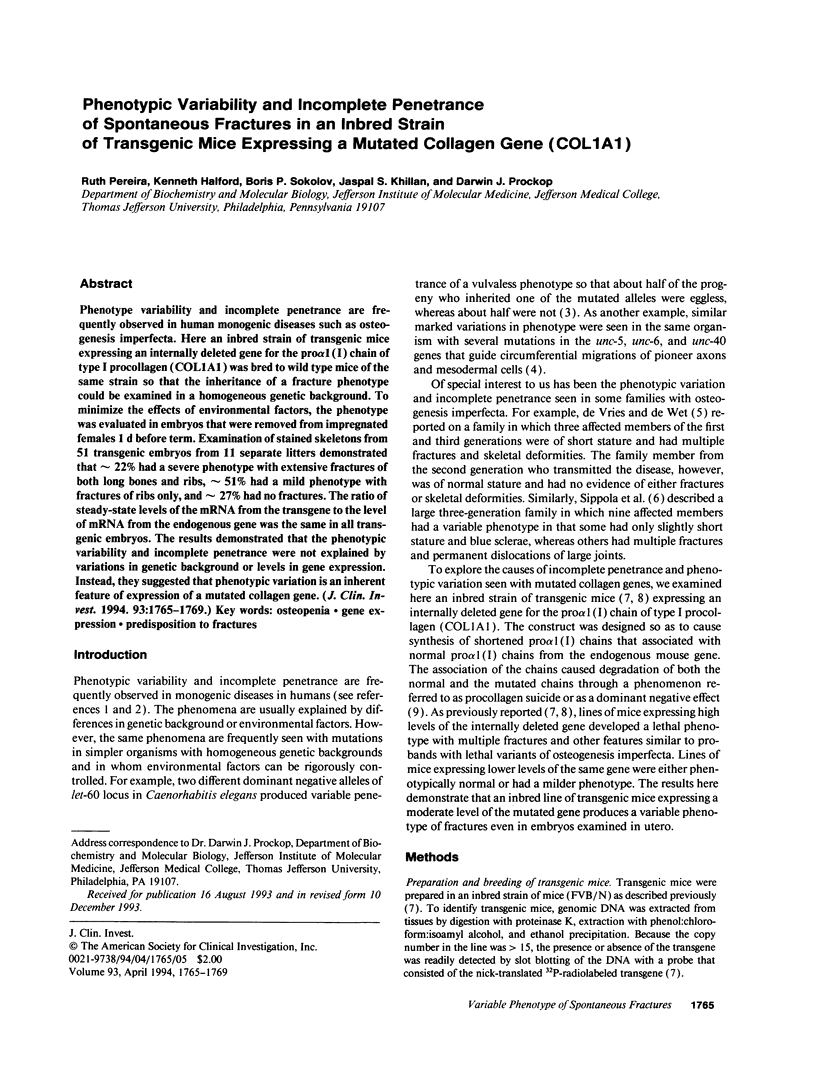
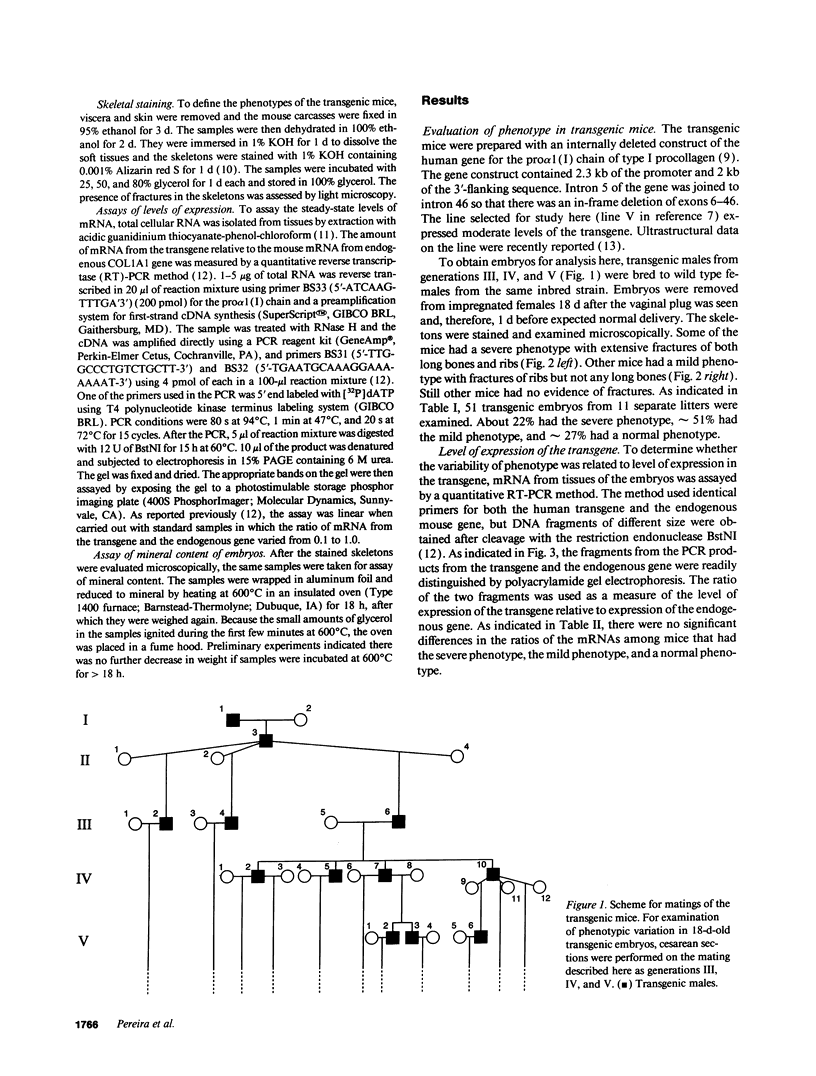
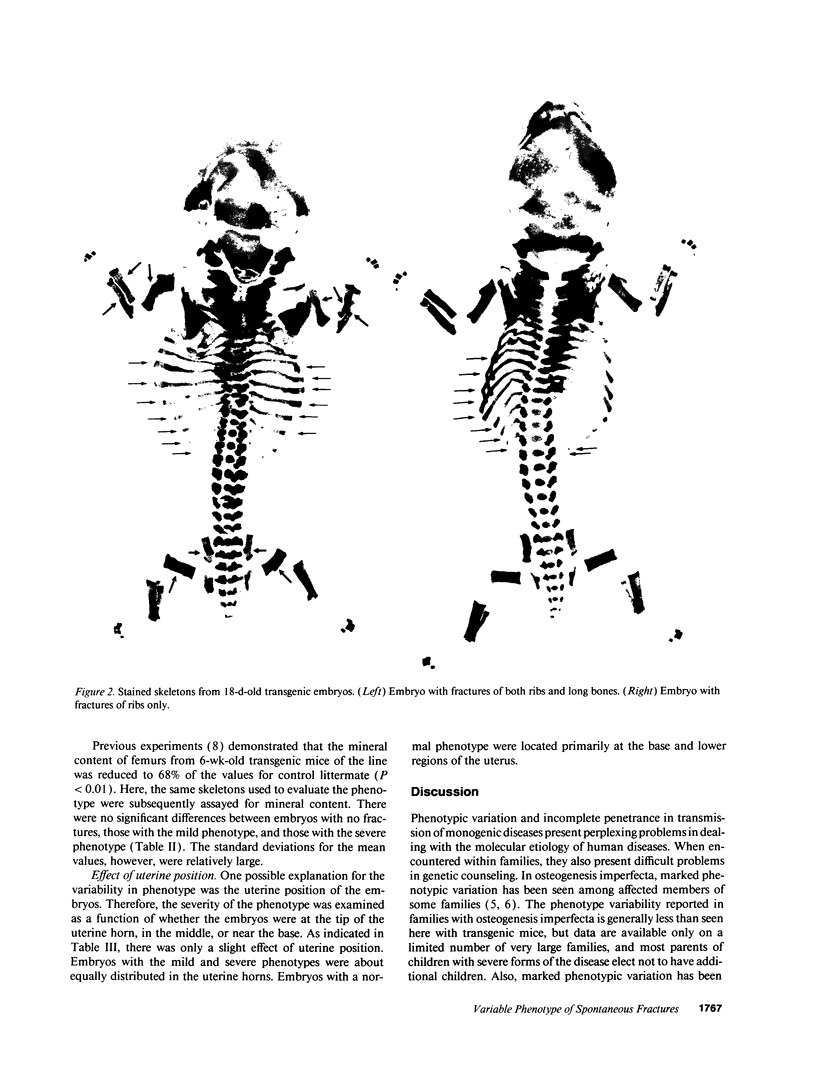
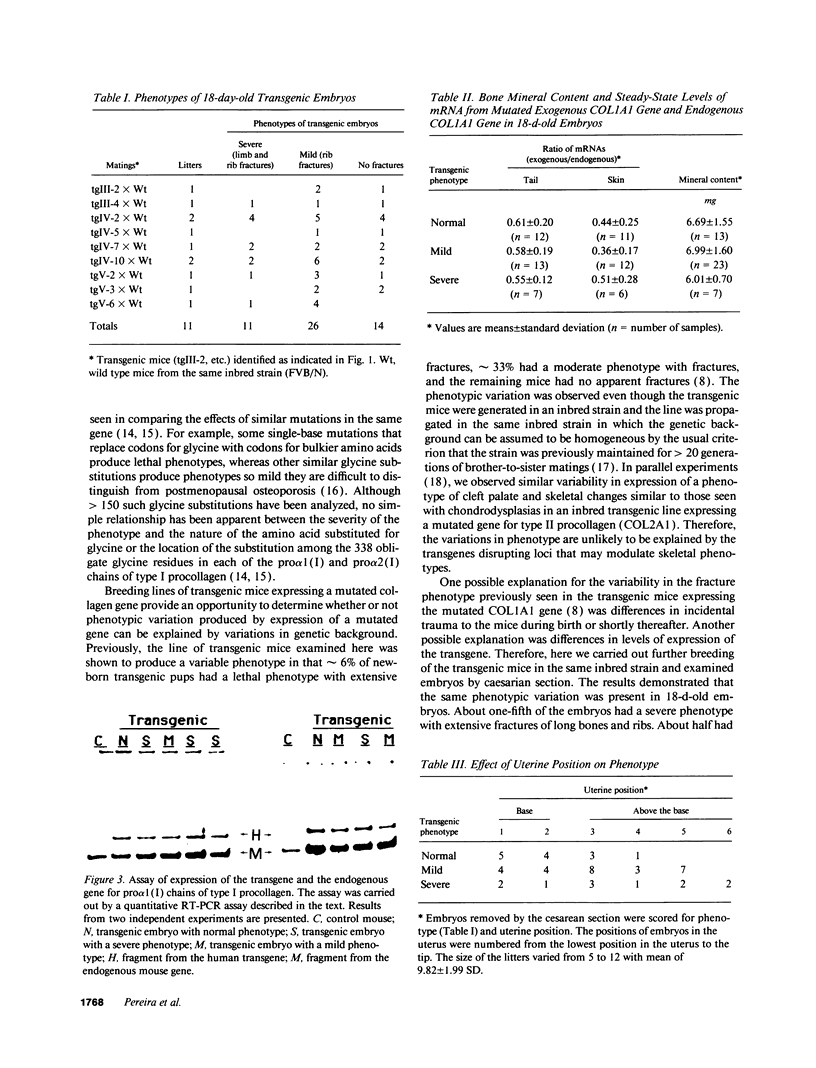
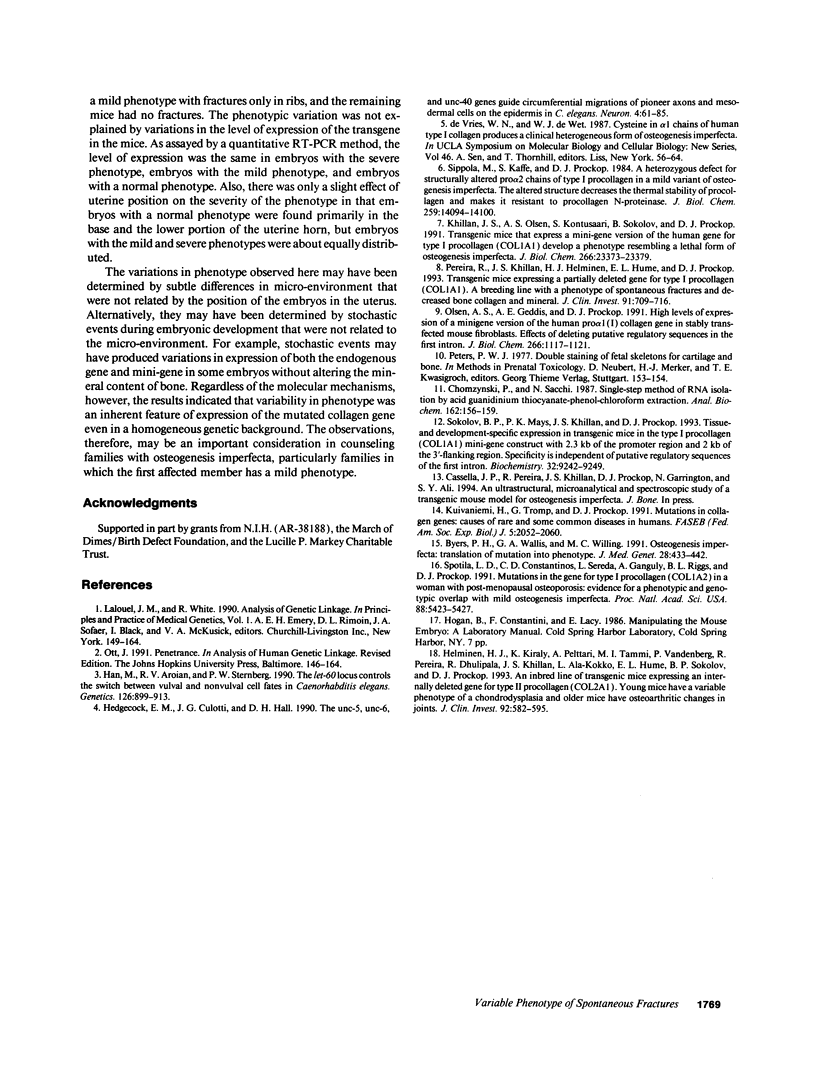
Images in this article
Selected References
These references are in PubMed. This may not be the complete list of references from this article.
- Byers P. H., Wallis G. A., Willing M. C. Osteogenesis imperfecta: translation of mutation to phenotype. J Med Genet. 1991 Jul;28(7):433–442. doi: 10.1136/jmg.28.7.433. [DOI] [PMC free article] [PubMed] [Google Scholar]
- Chomczynski P., Sacchi N. Single-step method of RNA isolation by acid guanidinium thiocyanate-phenol-chloroform extraction. Anal Biochem. 1987 Apr;162(1):156–159. doi: 10.1006/abio.1987.9999. [DOI] [PubMed] [Google Scholar]
- Han M., Aroian R. V., Sternberg P. W. The let-60 locus controls the switch between vulval and nonvulval cell fates in Caenorhabditis elegans. Genetics. 1990 Dec;126(4):899–913. doi: 10.1093/genetics/126.4.899. [DOI] [PMC free article] [PubMed] [Google Scholar]
- Hedgecock E. M., Culotti J. G., Hall D. H. The unc-5, unc-6, and unc-40 genes guide circumferential migrations of pioneer axons and mesodermal cells on the epidermis in C. elegans. Neuron. 1990 Jan;4(1):61–85. doi: 10.1016/0896-6273(90)90444-k. [DOI] [PubMed] [Google Scholar]
- Helminen H. J., Kiraly K., Pelttari A., Tammi M. I., Vandenberg P., Pereira R., Dhulipala R., Khillan J. S., Ala-Kokko L., Hume E. L. An inbred line of transgenic mice expressing an internally deleted gene for type II procollagen (COL2A1). Young mice have a variable phenotype of a chondrodysplasia and older mice have osteoarthritic changes in joints. J Clin Invest. 1993 Aug;92(2):582–595. doi: 10.1172/JCI116625. [DOI] [PMC free article] [PubMed] [Google Scholar]
- Khillan J. S., Olsen A. S., Kontusaari S., Sokolov B., Prockop D. J. Transgenic mice that express a mini-gene version of the human gene for type I procollagen (COL1A1) develop a phenotype resembling a lethal form of osteogenesis imperfecta. J Biol Chem. 1991 Dec 5;266(34):23373–23379. [PubMed] [Google Scholar]
- Olsen A. S., Geddis A. E., Prockop D. J. High levels of expression of a minigene version of the human pro alpha 1 (I) collagen gene in stably transfected mouse fibroblasts. Effects of deleting putative regulatory sequences in the first intron. J Biol Chem. 1991 Jan 15;266(2):1117–1121. [PubMed] [Google Scholar]
- Pereira R., Khillan J. S., Helminen H. J., Hume E. L., Prockop D. J. Transgenic mice expressing a partially deleted gene for type I procollagen (COL1A1). A breeding line with a phenotype of spontaneous fractures and decreased bone collagen and mineral. J Clin Invest. 1993 Feb;91(2):709–716. doi: 10.1172/JCI116252. [DOI] [PMC free article] [PubMed] [Google Scholar]
- Sippola M., Kaffe S., Prockop D. J. A heterozygous defect for structurally altered pro-alpha 2 chain of type I procollagen in a mild variant of osteogenesis imperfecta. The altered structure decreases the thermal stability of procollagen and makes it resistant to procollagen N-proteinase. J Biol Chem. 1984 Nov 25;259(22):14094–14100. [PubMed] [Google Scholar]
- Sokolov B. P., Mays P. K., Khillan J. S., Prockop D. J. Tissue- and development-specific expression in transgenic mice of a type I procollagen (COL1A1) minigene construct with 2.3 kb of the promoter region and 2 kb of the 3'-flanking region. Specificity is independent of the putative regulatory sequences in the first intron. Biochemistry. 1993 Sep 7;32(35):9242–9249. doi: 10.1021/bi00086a033. [DOI] [PubMed] [Google Scholar]
- Spotila L. D., Constantinou C. D., Sereda L., Ganguly A., Riggs B. L., Prockop D. J. Mutation in a gene for type I procollagen (COL1A2) in a woman with postmenopausal osteoporosis: evidence for phenotypic and genotypic overlap with mild osteogenesis imperfecta. Proc Natl Acad Sci U S A. 1991 Jun 15;88(12):5423–5427. doi: 10.1073/pnas.88.12.5423. [DOI] [PMC free article] [PubMed] [Google Scholar]




